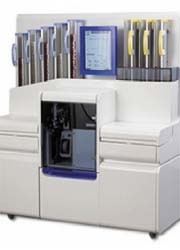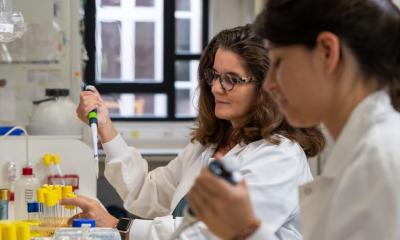Automated plate streaking
The vital, routine task of plate streaking to isolate a pure culture is inefficient and time-consuming, significantly slowing microbiologists' responses.

At last, automated testing, which has transformed many laboratory procedures, also looks set to transform this procedure. Following a licensing agreement with LabTech Systems of Kent Town, Australia, the diagnostic equipment distributor BioMérieux Clinical Diagnostics of Marcy l’Etoile, France, has developed the patented robotic Previ Isola automated pre-pour media streaker.
This piano-size equipment contains a plastic, sterile, disposable comb-like applicator. Specimens are put on the agar plates and the comb is placed above them. The plates spin and the combing then streaks plates consistently, without the variations seen with manual processing. That alone marks a major advance because inconsistent streaking can seriously lessen the success of a culture.
The Previ Isola simultaneously holds up to five types of media, including biplates, and can process 180 plates an hour, far more than even the most efficient manual processing. In addition there is no cross-contamination. Previ Isola’s joint inventor John Glasson, former chief scientist at the Institute of Medical and Veterinary Science, Adelaide, Australia, says that he had become ‘fed up’ with the bore of taking samples in diagnostic laboratories. Nearly three quarters of microbiology costs came from personal labour, he observed, ‘so there was a clear need to automate what we do at the bench. When the machine sees a particular type of specimen, it can work out which agar plates to select for that protocol,’ he explained. ‘As that is controlled by computer, once all the information is in, it is there forever. This means that if, for instance, you are looking for salmonella or campylobacter the machine can manage any of those plates. It is up to the microbiologists to select what plates to use. They programme the machine.’
Report: David Loshak
19.11.2008











